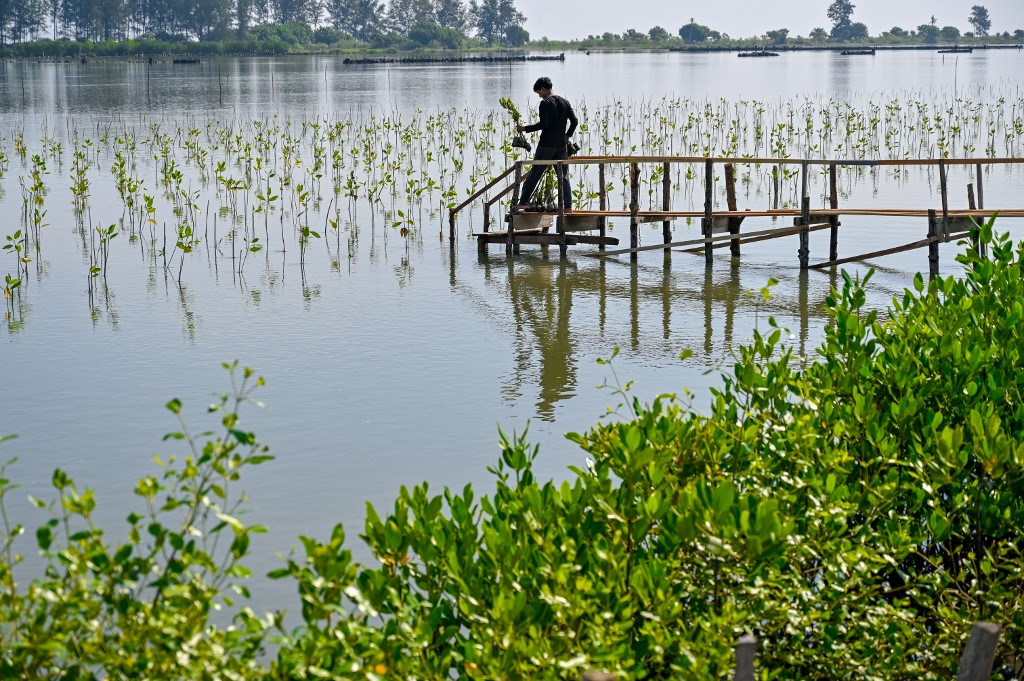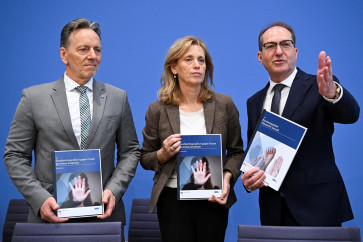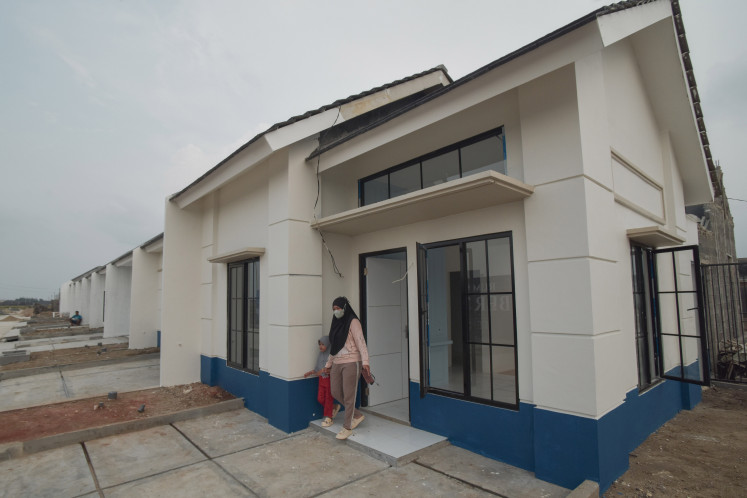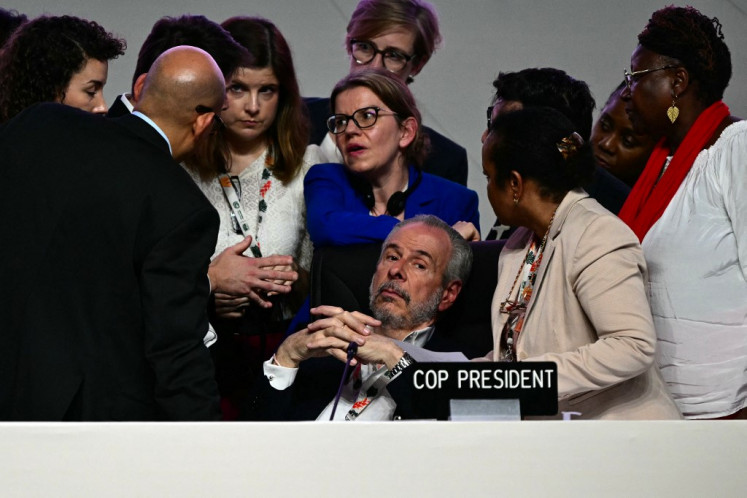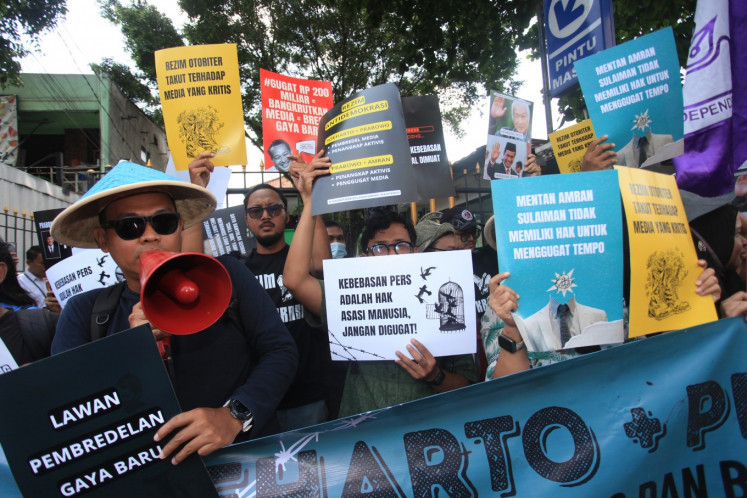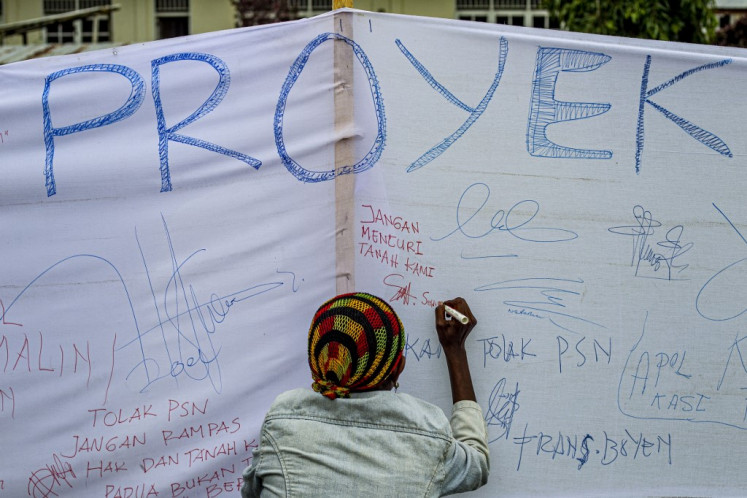Popular Reads
Top Results
Can't find what you're looking for?
View all search resultsPopular Reads
Top Results
Can't find what you're looking for?
View all search resultsAsia demands a new playbook for philanthropy, collaboration and leadership
The convergence of climate change, food insecurity, technological disruption and conflict is creating a series of overlapping shocks that exacerbate one another, striking hardest at Asia’s most vulnerable communities.
Change text size
Gift Premium Articles
to Anyone
A
sia stands at an unmistakable crossroads. As a global economic powerhouse, the region accounted for nearly 60 percent of world growth in 2024, a remarkable achievement by any measure. Yet this progress now faces a formidable test.
The convergence of climate change, food insecurity, technological disruption and conflict is creating what experts term a “polycrisis”: a series of overlapping shocks that exacerbate one another, striking hardest at Asia’s most vulnerable communities.
Indonesia has not been an exception to the changes happening in the world, by 2050, Indonesia could endure heat waves that last 8,000 percent longer, face depletion of fish stocks and suffer coastal flooding. At the same time, the wealth gap continues to widen.
According to the Asian Development Bank (ADB) and the Internal Displacement Monitoring Centre (IDMC), Asia Pacific bore the brunt of global disaster-related displacements over the last decade, with 177 million internal displacements reported from 2014 to 2023.
In Southeast Asia in particular, food security could be severely affected, rice production, among others, is under threat. Indonesia is one of the most vulnerable countries to the impacts of climate change. Floods may result in displacement, and drought during critical times of the year means a decrease in crop yields, affecting economic stability as well as nourishment of the people.
Such a landscape demands innovative solutions to traverse the unique geographical reality. These interconnected crises are revealing the limits of traditional, aid-driven development models, often imported from the West, which struggle to keep pace with the region’s complexity and scale. At this inflection point, we must ask: are our current models of social and environmental progress fit for purpose?
The era of donor-led blueprints and isolated interventions is fading. Today’s challenges demand adaptive, locally led solutions and a new kind of leadership: one that is bold, collaborative and rooted in the nuances of Asia’s dynamic societies.
The AVPN Global Conference 2025, held in Hong Kong from Sept. 9 to 11, brought together more than 1,500 delegates, 300 speakers and 110 sessions under the theme “Asian Leadership for an Inclusive World”. The conference united business leaders, funders, policymakers, asset managers, family offices, institutional investors and impact organizations.
Philanthropy in Asia is undergoing a profound transformation. No longer a peripheral, charitable supplement, it is now the connective tissue bridging governments, private capital and communities around a common purpose. Historically, philanthropic resources in Asia played a supplementary role to government action. Now, they have become vital, particularly in funding early-stage ideas, elevating underrepresented voices and driving innovation that traditional investors may overlook.
Strategic philanthropy is becoming more intergenerational, with bold, globally minded next-generation leaders taking the reins. These funders insist on impact, scalability and measurable results, eschewing tradition for outcomes. With an estimated US$2.5 trillion expected to shift to the next generation of Asian philanthropists over the next decade, our region is poised to unlock unprecedented resources for the common good.
Corporate giving in Asia is also evolving, moving beyond infrastructure projects toward deeper, more collaborative engagement with local communities. Forward-looking enterprises are co-creating solutions with communities, while corporate expertise is matched with local insight and ownership. The emphasis now is on co-developing programs that leverage the expertise of local actors, supported by corporate resources and innovation.
In Indonesia, KUMPUL exemplifies this shift by partnering with AVPN for the AI Opportunity Fund and Lighthouse Fund to drive opportunities for entrepreneurs in Indonesia by building inclusive programs.
If Asia is to lead the world on climate, health, education, gender equality and technological innovation, it must set a new global standard for philanthropy and collaboration. A striking example of this momentum is Indonesia’s PNM, which in 2025 successfully issued $1 billion in orange bonds, the largest in Asia, to support women-focused micro-finance. Oversubscribed 10.88 times, this issuance signals both investor confidence and a rising appetite for impact capital in the region. It stands as a sign of hope, showing that Asia is not only ready to absorb bold financing instruments but can set the tone for inclusive capital markets worldwide.
The conference demonstrated the power of Asia’s models of collaboration rooted in local wisdom yet scalable across borders to shape global progress in the decades ahead.
Asia’s polycrisis is not just a challenge, it is a defining opportunity for regional leadership. Asia’s response to this polycrisis, in the form of bold solutions, partnerships and a willingness to fund what works, will not only shape the region’s destiny, but set the new global playbook for inclusive and sustainable development.
Indonesia, with its beautiful greenery and unique island views, coupled with its vulnerability to climate change, makes a strong case for nature-based solutions. That being said, multi-sector collaboration across education, health, culture and social welfare are absolutely necessary.
With 44 million youth in Indonesia, the time for incremental change is past. The blueprint for Indonesia and the broader Asian century must be drawn now, with locally led solutions and bold partnerships at its foundation. Funders must move decisively to support what Asia needs and what Asia itself is ready to deliver.
---
The writer is CEO of AVPN, a network of social investors in Asia.

